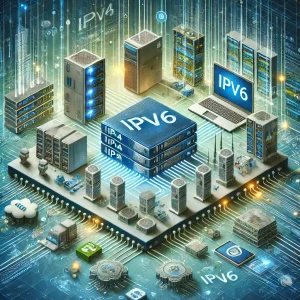
In today’s rapidly evolving digital landscape, the lines between network operations and security operations are increasingly blurred. This convergence has given rise to a new paradigm: integrated network and security operations. By merging network and security operations centers (NOC and SOC), organizations can significantly enhance their ability to detect and respond to threats. This approach not only streamlines operations but also provides a more robust defense against sophisticated cyber threats, thereby enhancing threat detection and response.
The Evolution of Network and Security Operations
Traditionally, network operations centers (NOCs) and security operations centers (SOCs) have operated in silos. NOCs focus on maintaining network performance, ensuring uptime, and managing network infrastructure. SOCs, on the other hand, concentrate on monitoring and responding to security incidents. However, this separation often leads to inefficiencies and communication gaps, which can hinder an organization’s overall security posture.
With the increasing complexity of cyber threats and the growing interdependence of network and security functions, the need for a more integrated approach has become apparent. Merging NOC and SOC functions can bridge these gaps, fostering better collaboration and more effective threat management, thereby enhancing threat detection and response.
Benefits of Integrated Network and Security Operations
- Enhanced Visibility and Situational Awareness
- Integrated operations provide a unified view of network performance and security events. This comprehensive visibility allows for better identification of anomalies that may indicate potential threats. By correlating network performance data with security alerts, organizations can detect threats that might otherwise go unnoticed, significantly enhancing threat detection and response.
- Improved Incident Response
- When network and security teams work together, they can respond to incidents more quickly and effectively. Integrated operations enable faster identification of the root cause of an issue, reducing the time it takes to mitigate threats. This collaboration also ensures that both network and security aspects are addressed during incident response, preventing recurrence, and enhancing threat detection and response.
- Streamlined Operations and Cost Efficiency
- Combining NOC and SOC functions can lead to significant cost savings. By eliminating redundancies and optimizing resource allocation, organizations can reduce operational costs. Moreover, a unified team can leverage shared tools and processes, further enhancing efficiency and enhancing threat detection and response.
- Proactive Threat Hunting and Risk Management
- Integrated operations facilitate proactive threat hunting by leveraging the combined expertise of network and security professionals. This proactive approach helps identify vulnerabilities and potential threats before they can be exploited. Additionally, it allows for continuous risk assessment and management, ensuring that security measures are always up to date, thereby enhancing threat detection and response.
Key Components of an Integrated Operations Center
- Unified Monitoring and Analytics
- Implementing a centralized platform for monitoring and analytics is crucial for integrated operations. This platform should aggregate data from various sources, including network devices, security tools, and threat intelligence feeds. Advanced analytics and machine learning can then be applied to detect patterns and anomalies indicative of threats, thereby enhancing threat detection and response.
- Automated Incident Response
- Automation plays a vital role in enhancing the efficiency of integrated operations. Automated incident response tools can quickly triage alerts, initiate predefined response actions, and escalate incidents to human analysts when necessary. This reduces response times and minimizes the impact of security incidents, thereby enhancing threat detection and response.
- Collaborative Culture and Skill Development
- Fostering a collaborative culture is essential for the success of integrated operations. Cross-training network and security personnel ensures that both teams have a shared understanding of each other’s roles and responsibilities. Regular training and skill development programs can keep staff updated on the latest threats and best practices, thereby enhancing threat detection and response.
- Advanced Threat Intelligence
- Leveraging threat intelligence is critical for staying ahead of emerging threats. Integrated operations centers should have access to real-time threat intelligence feeds that provide insights into the latest attack vectors, tactics, and techniques used by cyber adversaries. This information can be used to strengthen defenses and inform proactive threat hunting efforts, thereby enhancing threat detection and response.
Challenges and Considerations
While the benefits of integrated network and security operations are clear, there are several challenges that organizations must address to ensure successful implementation:
- Cultural and Organizational Barriers
- Merging NOC and SOC functions requires a shift in organizational culture. Resistance to change and siloed mindsets can hinder collaboration. It is important to foster a culture of teamwork and mutual respect, where network and security professionals work together towards common goals, thereby enhancing threat detection and response.
- Technical Integration
- Integrating disparate tools and systems can be complex. Organizations need to invest in technologies that support interoperability and data sharing. A robust integration strategy should be developed to ensure seamless communication between different platforms and tools, thereby enhancing threat detection and response.
- Resource Allocation
- Balancing resources between network and security operations can be challenging. Organizations need to ensure that both functions have adequate resources to perform their tasks effectively. This may involve reallocating budgets, hiring additional staff, or upskilling existing personnel, thereby enhancing threat detection and response.
- Continuous Improvement
- Cyber threats are constantly evolving, and integrated operations centers must continuously adapt to stay ahead. Regular assessments, updates to processes, and adoption of new technologies are essential to maintaining an effective defense posture. Organizations should establish a framework for continuous improvement and innovation, thereby enhancing threat detection and response.
Real-World Examples
Several organizations have successfully implemented integrated network and security operations, demonstrating the tangible benefits of this approach:
- Financial Institutions
- Financial institutions are prime targets for cyber attacks. By integrating their NOC and SOC functions, these organizations have achieved faster detection and response times, reducing the impact of security incidents. The unified approach has also improved compliance with regulatory requirements, thereby enhancing threat detection and response.
- Healthcare Sector
- Healthcare organizations manage sensitive patient data, making them attractive targets for cybercriminals. Integrated operations have helped these organizations enhance their security posture by providing comprehensive visibility into network and security events. This has enabled quicker identification and mitigation of threats, safeguarding patient data, thereby enhancing threat detection and response.
- Large Enterprises
- Large enterprises with complex IT environments benefit significantly from integrated operations. By breaking down silos and fostering collaboration, these organizations have improved their overall security posture. The integrated approach has also led to cost savings through optimized resource allocation and reduced duplication of efforts, thereby enhancing threat detection and response.
Conclusion
The integration of network and security operations is a strategic imperative for organizations seeking to enhance their threat detection and response capabilities. By merging NOC and SOC functions, organizations can achieve greater visibility, faster incident response, and more efficient operations. While challenges exist, the benefits of integrated operations far outweigh the difficulties. As cyber threats continue to evolve, organizations must adopt a proactive and collaborative approach to protect their digital assets and ensure business continuity. Embracing integrated network and security operations is a critical step towards enhancing threat detection and response.





